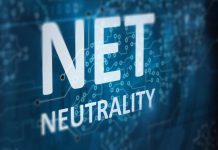This article is written by Pranav Sethi, from SVKM NMIMS School of law, Navi Mumbai..
Table of Contents
Introduction
Over many years, net neutrality rules have been a controversial topic in the United States, but it is now being discussed more widely, with the European Union (EU), many European countries, and the Japanese government all looking into it. Even within countries, let alone across borders, there is no universally recognized concept of net neutrality. Nonetheless, supporters of net neutrality argue that the Internet’s openness and creativity are due to a system in which the Internet’s knowledge is concentrated at the network’s edges, with the edges linked by comparatively “dumb pipes.” People are concerned that without some form of regulation, network operators will favour their own or supported applications or undermine traffic to websites that do not invest in higher quality service rates.
Net neutrality critics argue that the regulations are excessive, limit network expenditure, and result in inappropriate use of current infrastructure (see, for example, Hahn and Wallsten, 2006). Network neutrality regulations can also stifle innovation by reducing the usefulness of such systems, such as voice over internet protocol (VoIP) or future telemedicine implementations, which require actual connectivity and may not function effectively without packet prioritization.
In practice, a content provider competing to offer similar programs could have an opportunity to indulge in anti-competitive conduct against an infrastructure provider. A broadband service offering its very own video service, for example, could have an opportunity to improve the quality of service of a business attempting to market a similar program online.
Conversely, the dialogue in Europe, and especially in the EU, has centered on the role that unbundling – or mandated network sharing – will play a role in maintaining net neutrality rules. Proponents of unbundling claim that if the infrastructure operator does not offer distribution operations or is only one of many retailers providing services over its infrastructure, it will have less opportunity to differentiate in favour either for or against specific information. Opponents of unbundling rarely mention net neutrality, although they do point out that it will minimize incentives to invest in the runtime environment.
Defining net neutrality
Columbia Law Professor Tim Wu coined the word “network neutrality” to define the attempt by supporters of an “open access” communications infrastructure to handle all information on a network fairly. The concept has since been co-opted into philosophy or initiative that advocates viewing all Internet pages, outlets, data, and participants equally, irrespective of the content’s perceived value.
Advocates of a neutral network want the government to understand that the “open access” concept of net neutrality is followed. Meanwhile, opponents of the “free access” neutral network argue that legislation is excessive and would stifle the growth of broadband networks. Perhaps not coincidentally, both supporters and proponents of network neutrality claim to be “saving the Internet” from self-serving companies’ discrimination or unnecessary government control, respectively.
The dualistic response to net neutrality rules has resulted in a condition in which both parties are attempting to “save the Internet” while fully understanding the real effects of legislation or lack thereof on the content delivery market. Wu’s point, which is opposed to this dispute, is that the legislative judgment for an individual network should be focused on how the system handles outside information in comparison to its information, rather than whether the network is fully open or closed completely.
How important is the internet
When researchers at Stanford University and the University of California, Los Angeles (UCLA) linked two computers to send messages to each other in the late 1960s, the Internet was born. The researchers wired four computers together soon after their initial success, and the digital era started to stir. More than half a century later, 1.9 billion people have logged on to the network, and it has become an integral part of people’s everyday lives across the entire globe.
Individuals could either text out or check journal entries and deliver emails to colleagues who instantly get the message with a few clicks of the mouse or button pushes. Internet users can order food, play games, chat with friends online, and even look up details on administrative law without ever leaving their computer. Many people use social media sites like Facebook and Twitter to keep their friends and family up to date on their lives, post pictures, look for work, and connect with others.
The internet’s operation
To comprehend net neutrality, one should grasp the fundamentals of how the Internet operates. Content providers, internet backbone networks, cable service providers, and customers are the four components of an incredibly simplistic perception of the Network.
These sections form a massive network of interconnected computers. The majority of computers link to the web through an Internet Service Provider (ISP). That ISP can then link to other bigger companies, and so on, forming the Internet. The Internet is essentially a system of small networks linked together by network access points (NAPs) to form a massive network.
People can post out packets of data that disclose or obtain information using this network of computers. The details provided out by these customers are broken down into small bits and filtered via dynamic routing.
Policies on net neutrality legislation
Net neutrality is a principle that dates back to the 1996 Federal Telecommunications Act (Communications Act), which stated that major providers such as telephone companies, should not discriminate. “Common carriage prevents a network’s owner from interfering against details by blocking, restricting, or otherwise interfering with any data transmission.”
“All distributors of a telecommunications service are subject to compulsory common carrier regulation, which includes cost, nondiscrimination, interconnection, and universal service obligations,” according to Title II of the Communications Act. In 2002, the federal communications commission (FCC) recategorized cable Internet access as a services provider, declaring it “neither a ‘telecommunications service’ protected by Title II of the Communications Act nor a ‘cable service’ covered by Title VI.” As a result, the FCC shifted broadband networks from Title II to Title I of the Communications Act, where the FCC only has ancillary authority.
The FCC introduced its first implementation of net neutrality standards in 2005, “after obtaining an official complaint from Vonage that an unnamed network operator was disrupting its Voice over IP services.” Madison River was named as the offending corporation, and the problem was settled by a consent decree in which “Madison River promised to no further block traffic heading to Voice over IP services to make a voluntary contribution to the US Treasury in the payment of $15,000.”
In 2005, the Federal Communications Commission (FCC) released its Broadband Policy Statement (Internet Policy Statement) to demonstrate that the Internet can run neutrally.
The following were the four criteria used to accomplish this goal:
- Consumers have the right to browse the legal online content of their choosing to facilitate broadband penetration and maintain and facilitate the free and decentralized existence of the open Network.
- Consumers have the right to run apps and use providers of their choosing, according to law enforcing requirements, to facilitate broadband implementation and maintain and support the free and integrated existence of the public Internet.
- Consumers have the right to attach their selection of authorized technologies that do not affect the network to facilitate broadband rollout and protect and support the free and interconnected existence of the Internet Connection.
- Customers are entitled to competitiveness among access networks, application and telecommunications companies, and content providers to enable broadband deployment and maintain and promote the free and integrated existence of the open Network.
Various additions made by the federal communications commission (FCC)
The FCC introduced two additional rules in 2009: the non-discrimination concept, which states that ISPs must not prejudice against any advertisement or application, and the transparency principle, which states that ISPs must make all of their policies accessible to clients.
Under the framework of “fair network security,” the FCC incorporated some exceptions to their current rules in an attempt to settle with ISPs. If the following criteria are met, network management is sensible:
- To manage network congestion.
- To deal with dangerous traffic (viruses, spam).
- To prevent access to illegal content (child porn).
- To prevent illegal material transfers (copyright infringement).
- For other sensible network security techniques.
The 2005 and 2009 guidelines, on the other hand, were never subjected to “any formal rule-making processes that would make them formal FCC regulations.” For ISPs, they are still all beliefs and instructions. Even though these policy statements are simply guidelines rather than laws, the FCC attempted to impose their validity on ISPs.
Net neutrality landmark case laws
National Cable & Telecommunications Ass’ v. Brand X Internet Services (Brand X)
The case of, National Cable & Telecommunications Assn. v. Brand X Internet Services was determined by the Supreme Court in 2005. Brand X, an ISP, required the FCC to reinstate broadband as a telecommunications network so that commercial cable providers could be subject to shared carrier responsibilities. Nevertheless, for the objectives of deciding whether or not to extend ‘common carrier’ commitments under Title II of the Communications Act of 1934, the Court Upheld the classification of broadband Internet service networks as ‘information service[s]’ rather than ‘telecommunications service[s]’. The Court used the Chevron doctrine to draw this conclusion, which “prescribes broad judicial deference to agency constructions of vague statutes.”
Initially, the Brand X court determined that the “context of what an ISP ‘offer[s]’ was unclear” concerning the statute’s definition of “telecommunications facilities” in determining whether Congress also spoke specifically on the subject. Due to this uncertainty, the FCC determined that “ISPs provide internet services to customers but do not provide a concise capacity (from the end user’s viewpoint) to transfer information,” making it fair to describe broadband services as an information system. As a result, Brand X’s proposal for cable modem broadband networks to be reclassified as a common carrier was rejected.
Comcast Corp. v. FCC
In this case, Subscribers to Comcast, the second-biggest Internet service provider in the United States, alleged in 2007 that the company was deliberately intervening with their opportunities to exchange data online. The Free Press complained with the FCC after many recorded instances of Comcast restricting BitTorrent users from seeding files (allowing users to download full files directly from the seeder’s device through the successful peer-to-peer file sharing programme).
The Associated Press conducted its inquiry into the allegations and discovered that legal BitTorrent downloads of the King James Bible encountered unexpected problems. “Comcast refused to prevent any traffic but confirmed ‘delaying’ peer-to-peer information used by its customers in reply to the AP investigation.” Chairman Kevin Martin of the Federal Communications Commission launched an investigation into concerns about Comcast’s direct intervention with Internet traffic in 2008.
Comcast was limiting massive file transfers all of the time, according to the FCC’s report, not just when network components were limited. The FCC released a directive “declaring that it had the authority to control Comcast’s network management activities” following its investigation. Comcast proceeded with the request, but filed an application with the D.C. Circuit for analysis, claiming that the FCC had failed to explain its authority over ISP network security activities.
India’s current situation
In our nation, the fight for net neutrality started in 2015. The government then wanted to block Facebook’s Free Basics Program because it was considered to violate net neutrality laws. Airtel’s ‘Airtel Zero’ network had to be shut down for that reason, and the telecom giant had to withdraw its scheme that paid extra for internet calls. In particular, the Telecom Regulatory Authority of India (TRAI) allegedly issued the world’s strictest net neutrality rules in 2018, with violations subjecting violators to extreme penalties.
This was by the principles of the A.K. Bhargava Committee, a six-member panel formed in January 2015 to look at the different dimensions of net neutrality. As a result, it is fair to say that the problem in India regarding the enforcement of net neutrality regulations has been well-managed, with the government fully supportive of the required steps.
Conclusion
Throughout this post, we attempted to present both the supporters and critics of net neutrality’s claims. Since the internet’s “openness” is critical to its evolution, it is up to each of us to ensure that it is preserved. Net Neutrality accomplishes this goal by removing excess powers from Internet Service Providers (ISPs) and prohibiting them from engaging in unfair policies. Competitive environment and creativity are essential for the growth of the vast internet environment, as has been argued many times. Allowing broadband operators too much flexibility will spell the end of those necessities, thereby harming consumer welfare. We must recognize that the internet is all about innovative innovations and how new emerging businesses view themselves in this dynamic virtual environment. It is clear that not providing a level playing field solely for the benefit of internet providers and large existing businesses is not in our best interests. As a result, the best course of action for all of us is to actively engage in ensuring that net neutrality standards remain in place in our country and do not succumb to political pressures as they did in the United States.
References
- https://ezproxy.svkm.ac.in:2124/HOL/LuceneSearch?terms=Net-neutrality+Should+Become+a+Subject+of+International+Law%3A+an+analysis&collection=all&searchtype=advanced&typea=text&tabfrom=&submit=Go&sendit=&all=true
- https://moderndiplomacy.eu/2020/09/01/a-critical-analysis-of-the-concept-of-net-neutrality/
https://t.me/joinchat/J_0YrBa4IBSHdpuTfQO_sA
Follow us on Instagram and subscribe to our YouTube channel for more amazing legal content.
 Serato DJ Crack 2025Serato DJ PRO Crack
Serato DJ Crack 2025Serato DJ PRO Crack










 Allow notifications
Allow notifications



